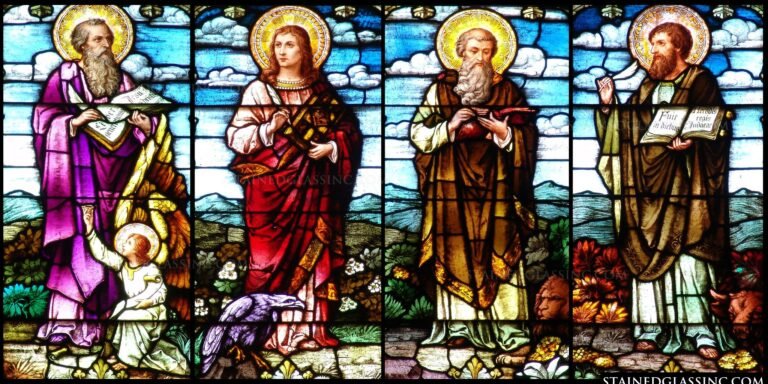
Unveiling the Mystical Layers: A Spiritual Exploration of the Bible
The Bible, revered by millions as a sacred text, holds a depth of wisdom and spiritual insight that transcends its historical and religious contexts. As we delve into its mystical dimensions through the teachings of Neville Goddard, Joseph Murphy, and Anthony Norvell, we uncover layers of meaning that can transform our understanding and spiritual practice. By integrating the allegorical nature of biblical stories, the power of the subconscious mind, and the profound concept of Christ consciousness, we reveal the Bible as a timeless guide for personal and spiritual growth.
The Symbolism of Names
Names in the Bible carry deep symbolic meanings that transcend their literal translations:
– Adam signifies “humanity,” representing the collective human experience.
– Eve means “life,” symbolizing the vital life force within us.
– Jesus derives from “Yeshua,” meaning “salvation” or “to save,” pointing to the transformative power of divine consciousness.
The Allegorical Nature of Biblical Stories
Neville Goddard emphasized that many biblical stories are allegories reflecting states of consciousness and stages of spiritual awakening:
– The Creation Story: The seven days of creation symbolize the process of manifesting desires, with each day representing a different stage of mental and spiritual development.
– Real-Life Example: Think of a person who wants to start a business. Each “day” of creation could represent different stages—dreaming up the idea, planning, gathering resources, building, launching, and finally running the business successfully.
– The Exodus: The journey of the Israelites from slavery in Egypt to the Promised Land represents the soul’s journey from bondage to spiritual freedom.
– Real-Life Example: Someone overcoming addiction might relate to this story. The “Egypt” of addiction enslaves them, and through recovery (their “journey”), they reach the “Promised Land” of sobriety and a new life.
– David and Goliath: This story symbolizes the triumph of faith and inner strength over seemingly insurmountable challenges.
– Real-Life Example: An individual facing a major health crisis or financial hardship, like starting a new business with limited funds or battling a serious illness, could see themselves as David, overcoming their “Goliath” with courage and perseverance.
The Law of Moses: A Spiritual Blueprint
The Law of Moses, comprising the commandments and teachings given to Moses on Mount Sinai, serves as a foundational blueprint for spiritual living:
– The Ten Commandments: These core directives guide ethical behavior and spiritual discipline, laying the groundwork for a harmonious life aligned with divine principles.
– Real-Life Example: A person striving to live a more ethical and principled life might use the Ten Commandments as a guide to improve their relationships, work ethic, and overall moral conduct.
– The Mosaic Laws: Beyond the Ten Commandments, these laws encompass guidelines for various aspects of life, emphasizing justice, compassion, and personal responsibility. They illustrate the importance of inner discipline and the alignment of one’s actions with spiritual truths.
– Real-Life Example: Think of a community volunteer who dedicates their time to help the less fortunate, embodying the principles of justice and compassion laid out in the Mosaic Laws.
The Power of the Subconscious Mind
Joseph Murphy highlighted the Bible’s teachings on the power of the subconscious mind. Many biblical passages reveal practical instructions for harnessing this inner power:
-“As a man thinketh in his heart, so is he” (Proverbs 23:7): This emphasizes the importance of our inner thoughts and beliefs in shaping our reality.
– Real-Life Example: A person practicing positive affirmations daily might start to see changes in their life circumstances, such as improved health, better relationships, or career success.
– “Ask, and it shall be given you; seek, and ye shall find; knock, and it shall be opened unto you” (Matthew 7:7): This teaches the principle of affirmations and visualizations in manifesting our desires.
– Real-Life Example: An individual who visualizes their goals and maintains a positive mindset about achieving them often finds opportunities and resources coming their way, leading to the fulfillment of their dreams.
Mystical Interpretations of Key Figures
Key figures in the Bible often represent archetypal aspects of our inner selves:
-Jesus Christ: Represents the highest state of consciousness, often referred to as Christ consciousness, characterized by unconditional love, compassion, and enlightenment.
– Real-Life Example: A person practicing unconditional love and forgiveness in their daily interactions, inspired by the teachings of Jesus, may experience profound inner peace and transformation.
-Moses: Symbolizes the law and the power of inner discipline, guiding us towards spiritual awakening.
– Real-Life Example: Someone who sets strict personal goals and adheres to a disciplined routine to achieve them embodies the spirit of Moses, leading themselves to greater achievements and spiritual growth.
-Mary Magdalene: Represents the divine feminine and the importance of direct spiritual experience and intuition.
-Real-Life Example: A person who trusts their intuition and seeks direct spiritual experiences through meditation or prayer might find themselves gaining deeper insights and a stronger connection to their inner wisdom.
The Gospel of Mary Magdalene
The Gospel of Mary Magdalene, a text excluded from the canonical Bible, offers profound spiritual insights:
– It emphasizes the importance of inner transformation and the direct experience of the divine.
– It portrays Mary Magdalene as a key disciple with deep spiritual understanding, challenging traditional narratives and highlighting the role of women in early Christian communities.
The Hidden Gospels and Mystical Teachings
The suppression of certain gospels, like those found in the Nag Hammadi library, points to the rich diversity of early Christian thought:
– These texts often emphasize personal spiritual experience and mystical interpretations of Jesus’s teachings.
– The Gospel of Thomas, for example, contains sayings of Jesus that focus on inner enlightenment and the realization of the Kingdom of God within.
Anthony Norvell's Practical Mysticism
Anthony Norvell’s teachings bring a practical approach to the mystical insights of the Bible:
– He emphasized the use of visualization, affirmation, and positive thinking to unlock the miracles within our minds.
– Norvell’s works, such as “The Million Dollar Secret Hidden in Your Mind,” offer step-by-step guidance on how to apply biblical principles for personal transformation and success.
– Real-Life Example: A person who uses Norvell’s techniques to overcome limiting beliefs and visualize success may find themselves achieving remarkable personal and professional goals, illustrating the practical application of these spiritual principles.
Christ Consciousness: The Ultimate Mystical Insight
At the heart of the Bible’s mystical teachings is the concept of Christ consciousness:
– This state of awareness transcends religious boundaries, inviting us to recognize the divine within ourselves and others.
– By embodying love, compassion, and enlightenment in our daily lives, we can experience the transformative power of Christ consciousness.
-Real-Life Example: Someone who practices mindfulness, compassion, and empathy in their interactions with others may begin to experience a sense of unity and divine connection, embodying Christ consciousness in their everyday life.
Why the Lost Gospels Were Hidden
The suppression of certain gospels was driven by a combination of theological, political, and social factors:
– During the early centuries of Christianity, there was a struggle to define orthodoxy and establish a unified doctrine. The process of canonization involved selecting writings that aligned with the emerging orthodox beliefs and rejecting those that did not.
– Many of the lost or hidden gospels, like those found in the Nag Hammadi library, presented views that differed significantly from the orthodox positions. They often emphasized direct, personal experiences of the divine, mystical interpretations of Jesus’s teachings, and a more egalitarian approach to spiritual leadership, which threatened the hierarchical structure of the early Church.
– Additionally, some texts, such as the Gospel of Mary Magdalene, highlighted the prominent roles of women in early Christian communities, challenging the patriarchal norms of the time.
The Bible, when approached with an open heart and mind, reveals itself as a profound spiritual guide. By exploring its mystical facts through the teachings of Neville Goddard, Joseph Murphy, and Anthony Norvell, we uncover layers of meaning that can inspire and transform our lives. Let us embrace the Bible not as a rigid dogma but as a living document, filled with timeless wisdom and spiritual truths that guide us towards our highest potential and the realization of Christ consciousness within.
Through the lenses of these spiritual teachers, we see the Bible as a dynamic text that invites us to embark on a journey of self-discovery and spiritual awakening. The allegorical stories, symbolic names, the Law of Moses, and hidden gospels all point towards a deeper understanding of our inner selves and our connection to the divine. By integrating these insights into our lives, we can unlock the transformative power of the Bible and experience the profound spiritual truths it holds.
Real-life examples bring these teachings to life, illustrating how the Bible’s mystical wisdom can be applied to overcome challenges, achieve personal growth, and cultivate a deeper spiritual connection. Let us journey together, embracing the Bible’s profound insights and allowing its spiritual truths to guide us towards a life of love, compassion, and enlightenment.
